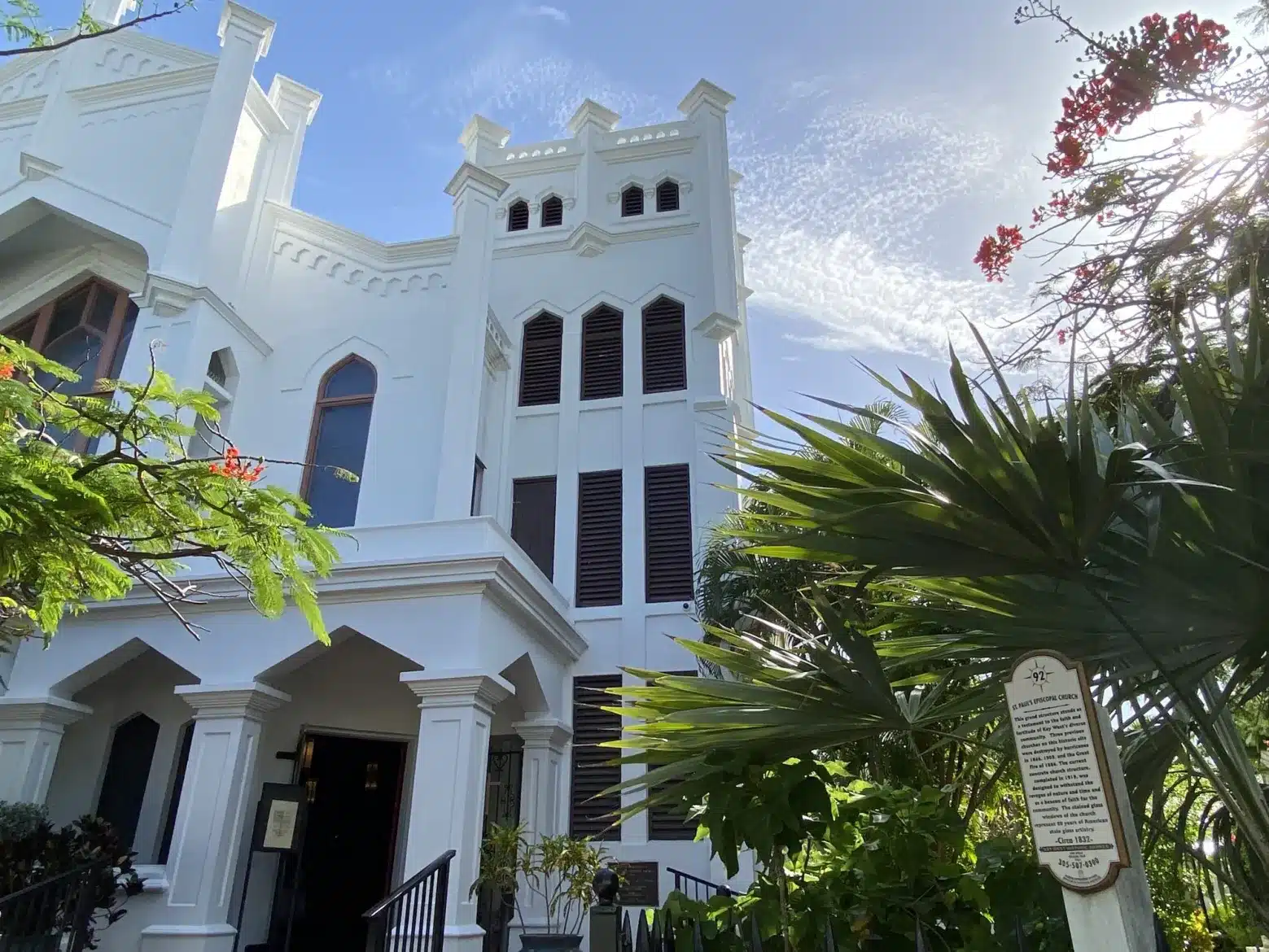Cross-posted from: Southerly Mag
An island city’s billion-dollar route to climate resilience will need residential buy-in to succeed. Local places of worship could be pivotal.
This story was produced through a collaboration involving Southerly, Climate Central and Newsy.
Grounds cloaked in greenery weave around a towering ivory chapel in the heart of downtown Key West, Fla. Founded in 1832, St. Paul’s Episcopal Key West is not only the oldest Christian congregation in the area, but one of the oldest congregations of any religious tradition south of St. Augustine.
The church is on its fourth building, the first three lost to fires and a hurricane. After nearly two hundred years of its congregation working to keep it standing, Reverend Donna Mote, the newest rector at St. Paul’s, is now worried about a more subtle risk: rising seas.
“It would be a shame to preserve all these buildings, and then have people scuba diving in them in 100 years,” Mote said.
St. Paul’s is located on one of the highest points of Key West; one of the 1,700 islands that make up the Florida Keys, where 90% of the land mass sits only five feet above the Atlantic Ocean. While scuba divers won’t be visiting the church in the coming century, with seas rising and storms intensifying, the eight-square-mile island city is facing more frequent and chronic flooding.
Local officials and organizations are working to hold back the seawater climbing higher, threatening to plunge the area underwater by the turn of the century. But billion-dollar resilience projects in the pipeline—intended to raise roadways and floodproof infrastructure to combat flood risk—will depend on community buy-in.
Just five months into her role at St. Paul’s, Mote intends to roll out a renewable energy audit of the church site to see how they can use cleaner energy. She also tries to set a sustainable example for her parishioners: she’s on a plant-based diet and encourages them to bike instead of drive, when possible.
While St. Paul Episcopal Key West sits on land high enough to protect it from all but the worst storm surges, a Climate Central analysis found that by 2080, rising seas will introduce a 1% annual chance of coastal flooding to the church’s property. That creates a one-in-four chance of a flood impacting the site every 30 years—a hazard so severe only 3% of the U.S. population currently lives in areas subject to this kind of risk.
Mote belongs to one of several faith-based communities in Florida turning their attention to climate action, making religious cases for environmental preservation, clean energy and emissions reductions. At St. Gregory’s Episcopal Church in Boca Raton, parish members lead beach clean-ups. The First Presbyterian Church of Tallahassee donates to the city’s sustainability carbon fund as they seek to reduce their carbon footprint to net zero. The First Baptist Church of Orlando has been recognized by the U.S. Environmental Protection Agency for reducing pollution through energy efficiency.
Experts and faith leaders say provincial places of worship have a leading role to play in facilitating that support, and helping people engage in local environmental and justice issues. “We can either preach now to help people realize this,” said Ryan Gladwin, Palm Beach Atlantic University associate professor of ministry and theology. “Or we’re just going to have to be mourning with them, in the future, what we’ve lost.”
Read more: ‘Preach now or mourn in the future’: How Key West faith leaders are confronting climate change





